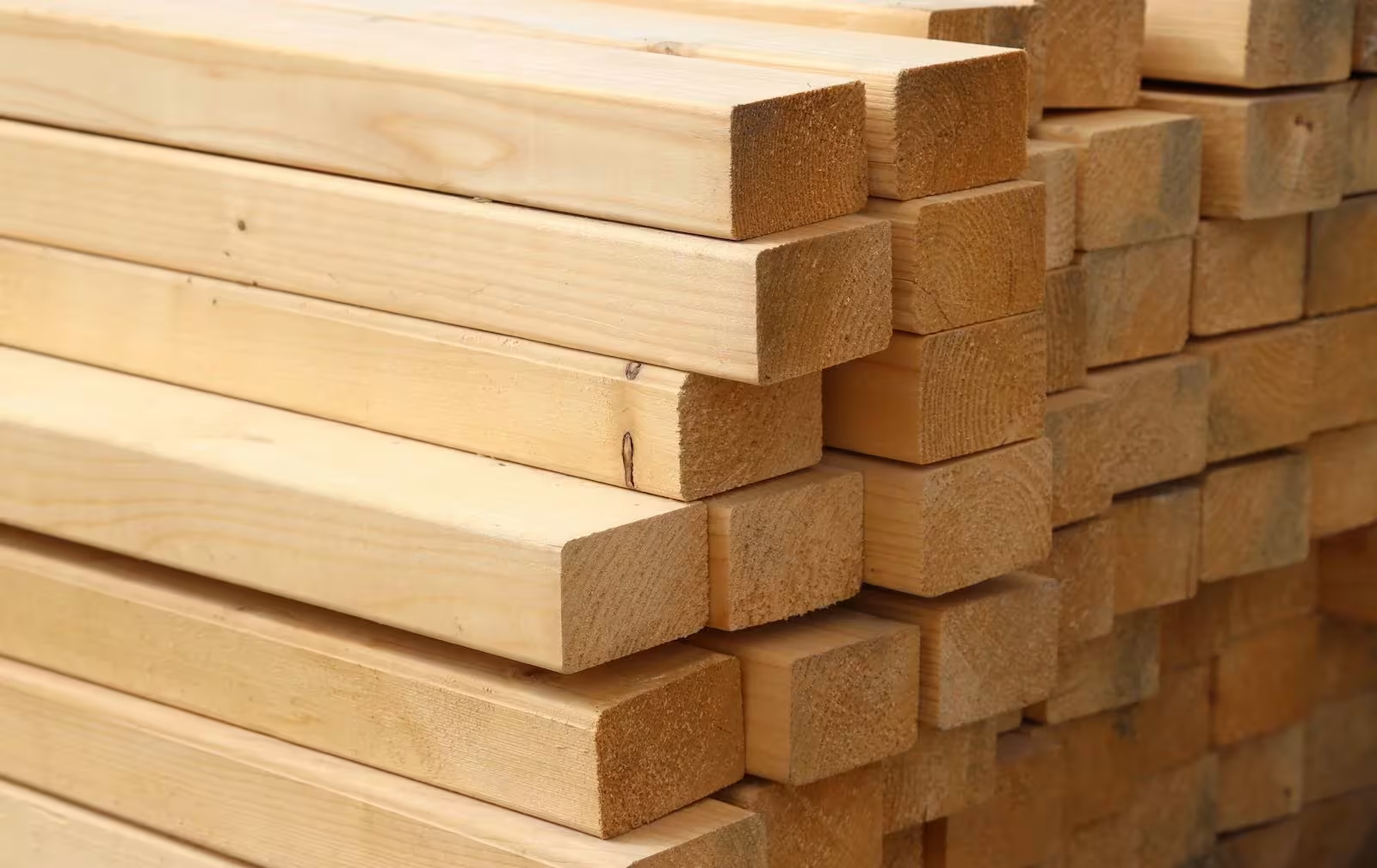CLS timber is one of the most widely used building materials in the UK for internal construction. Whether you’re a professional tradesperson or a weekend DIYer, understanding what CLS timber is and how to use it can make a massive difference in the success of your building projects. It’s a reliable, versatile, and cost-effective timber option that meets the structural and aesthetic needs of most indoor frameworks.
Standing for Canadian Lumber Standard, CLS timber is a type of softwood, typically made from spruce, pine, or fir. It is kiln-dried, regularised, and planed with smooth edges. These processing methods ensure a safer, cleaner finish that’s easy to handle, especially in tight or confined spaces like stud walls or door frames. Its rounded corners and consistent size have made CLS timber a favourite for internal partitioning across both residential and commercial builds.
What is CLS Timber?
CLS timber refers to wood that meets the Canadian Lumber Standard — a specification originally created for use in timber-framed house construction in North America. In the UK, the term CLS timber has become synonymous with precision-cut, kiln-dried, softwood timber used in interior framing applications. Its popularity stems from its standardised sizing, ease of use, and smooth finish, making it the first choice for stud walls and other structural internal elements.
This type of timber is specifically processed to be free of major defects, with smooth surfaces that reduce the risk of splinters or rough edges. It’s also more consistent in shape and size than rough sawn timber, which makes CLS timber ideal for jobs that demand accuracy. Because of its strength and aesthetic appeal, it’s often left exposed in utility rooms, garages, or lofts where visual appearance still matters.
CLS Timber Sizes and Dimensions
In the UK, CLS timber is commonly sold in nominal sizes such as 3×2 CLS timber and 4×2 CLS timber. However, due to planing and smoothing, the actual finished dimensions are slightly smaller. For example, 3×2 CLS timber typically measures around 63mm x 38mm, while 4×2 CLS timber is approximately 89mm x 38mm. These dimensions are perfect for constructing non-load-bearing walls, door linings, and interior framing.
You’ll often find CLS timber available in lengths ranging from 2.4 metres to 3.6 metres, and sometimes up to 4.8 metres, depending on the supplier. This versatility means it can easily be cut to size for different room dimensions or specific framing requirements. Builders and carpenters appreciate the standardisation because it speeds up installation and reduces waste on site.
CLS Timber Grades and Treatments

The quality and strength of CLS timber are often indicated by a grading system, most commonly C16 in the UK. C16 CLS timber is structurally sound and suitable for most internal construction applications, including studwork, floor joists, and roof battens. In some cases, C24 CLS timber is available, offering higher strength and less chance of defects, though it’s usually more expensive and reserved for structural elements with higher load demands.
One common question is, “Is CLS timber treated?” The answer depends on where and how you plan to use it. CLS timber can be purchased treated or untreated. Treated CLS timber is pressure-treated to protect against rot, insects, and moisture — making it suitable for humid environments like bathrooms, basements, or utility areas. For dry interior spaces, untreated CLS timber is more than sufficient, providing stability without additional chemical treatment.
Common Uses of CLS Timber in UK Construction
The primary use of CLS timber is in stud wall construction, where its straightness and consistent dimensions make framing simple and secure. It’s also widely used for door linings for CLS timber, offering a solid and neat framework to attach doors and architraves. These applications are especially valuable in house renovations and extensions, where speed and accuracy are critical.
Beyond stud walls, CLS timber is also used for boxing in pipework, building shelving units, supporting plasterboard, and creating DIY furniture. Its smooth surface reduces splintering, which means less sanding and preparation is needed before finishing or painting. Whether used by professionals or DIYers, CLS timber’s ease of use and reliability make it a must-have material in many UK building projects.
Where to Buy CLS Timber and Understanding Prices
CLS timber is widely available across the UK at major hardware retailers and builders’ merchants, including B&Q, Wickes, Jewson, and Travis Perkins. For those searching online, using keywords like “CLS timber near me” or specifying sizes such as “3×2 CLS timber” or “4×2 CLS timber prices” can help identify local stockists with the best availability and rates.
In terms of cost, CLS timber prices vary depending on dimensions, treatment, and length. For example, untreated 3×2 CLS timber can cost anywhere from £2.50 to £4.00 per metre, while treated 4×2 CLS timber may cost slightly more. Buying in bulk or through trade accounts can lead to discounts, and many suppliers offer click-and-collect or delivery options for added convenience. When planning your budget, factor in both the cost of timber and any finishes or fixings required for installation.
Conclusion
CLS timber remains one of the most practical and widely used materials in the UK for internal construction projects. Its origin as Canadian Lumber Standard timber gives it a reputation for precision, strength, and a quality finish. Whether you’re building stud walls, fitting door frames, or undertaking a home improvement project, CLS timber offers reliability and ease of use every step of the way.
Thanks to its wide availability, multiple sizes, and treatment options, CLS timber meets the needs of both professionals and DIY builders. Its clean appearance and uniform sizing help reduce waste and speed up projects, making it a highly efficient choice. When choosing timber for any interior structure, CLS timber is the safe, affordable, and smart solution.
Frequently Asked Questions
What does CLS timber mean?
CLS stands for Canadian Lumber Standard timber. It refers to kiln-dried, planed softwood timber used primarily for interior framing and construction.
Is CLS timber treated?
CLS timber is available in both treated and untreated forms. Treated CLS timber is better for damp environments, while untreated versions are ideal for dry interiors.
Can CLS timber be used outside?
Standard CLS timber is not recommended for outdoor use unless it is specifically treated for external environments.
What are the common sizes of CLS timber?
Popular sizes include 3×2 CLS timber (63mm x 38mm) and 4×2 CLS timber (89mm x 38mm), typically sold in lengths of 2.4m, 3m, or longer.
Where can I buy CLS timber in the UK?
You can purchase CLS timber from major retailers such as B&Q, Wickes, Jewson, and many local timber merchants.
What is C16 CLS timber?
C16 is a strength grading used in the UK. C16 CLS timber is suitable for most internal structural applications, including framing and stud walls.
Is CLS timber expensive?
CLS timber is one of the more affordable timber options, with prices depending on size, treatment, and supplier.
You may also read: Mobilize Financial Services UK: Flexible Finance, Leasing & Support for Renault Drivers



